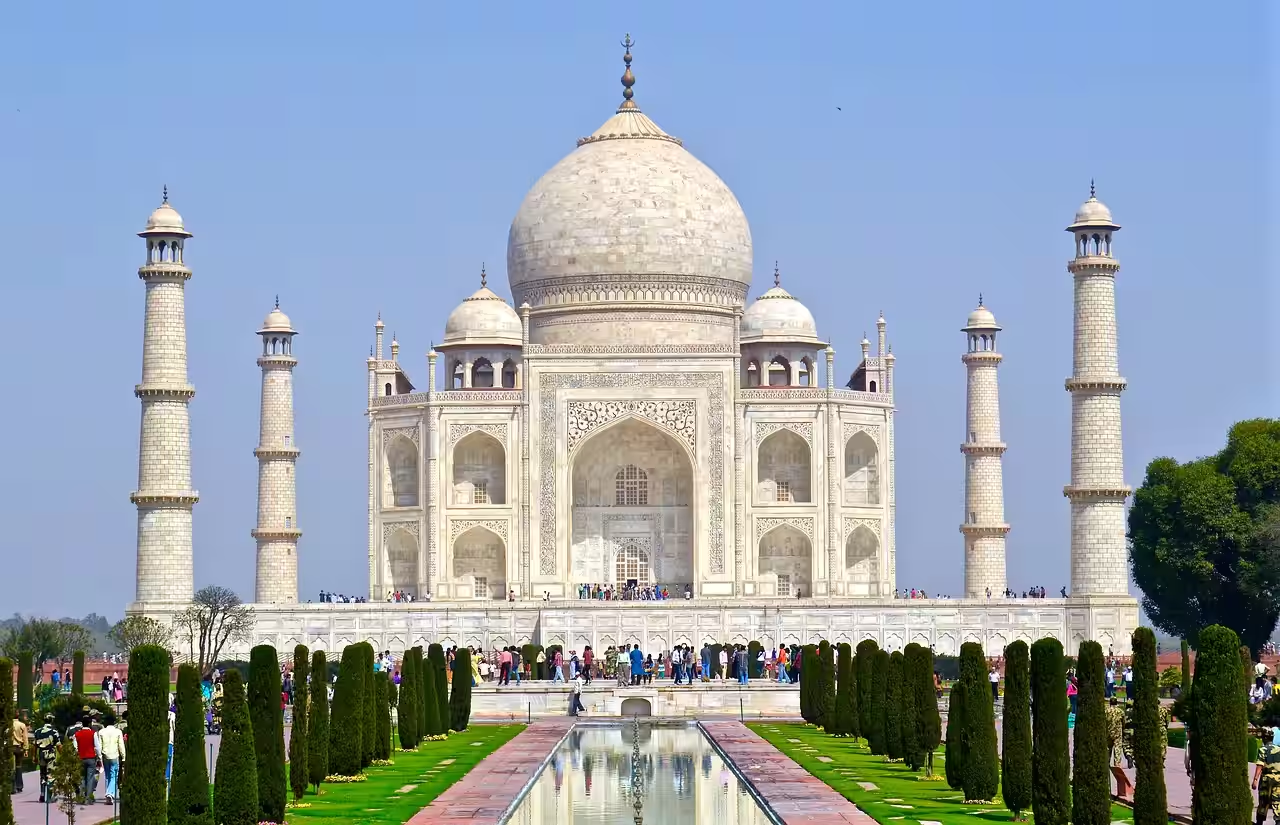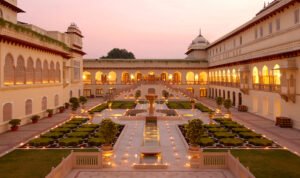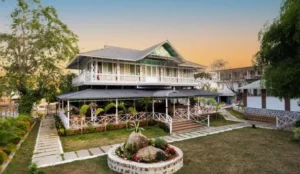Introduction
The Taj Mahal, an architectural masterpiece and one of the most celebrated landmarks in the world, stands as a symbol of love, artistic excellence, and India’s rich heritage. Located in Agra, Uttar Pradesh, this UNESCO World Heritage Site draws millions of visitors each year, mesmerized by its grandeur, intricate craftsmanship, and historical significance.
History and Significance
Commissioned in 1632 by Mughal Emperor Shah Jahan, the Taj Mahal was built in memory of his beloved wife, Mumtaz Mahal, who passed away during childbirth. This grand mausoleum took over 20 years to complete, with 20,000 artisans and architects contributing to its construction. Today, it stands as an enduring testament to eternal love and devotion.
Architectural Brilliance
The Taj Mahal is an exquisite blend of Persian, Indian, and Islamic architectural styles, constructed using pure white Makrana marble. Its beauty transforms throughout the day:
Soft pink hues in the morning
Golden tones in the evening
A silvery glow under moonlight
Key Architectural Features
The Grand Dome: A striking 73-meter-high dome, serving as the centerpiece of the monument.
Intricate Calligraphy: Beautiful inscriptions of Quranic verses inlaid in black marble across the walls.
Persian-Style Gardens (Charbagh): A meticulously designed symmetrical garden, symbolizing paradise.
Four Minarets: Positioned at each corner, slightly tilted outward as a safety precaution against earthquakes.
Pietra Dura Inlay Work: Delicate floral patterns made from semi-precious stones like jasper, turquoise, and onyx, embedded into marble.
Best Time to Visit
October – March: The weather is pleasant, making it the ideal time for sightseeing.
Full Moon Nights: A breathtaking view when the Taj Mahal glows under the moonlight (special night viewing tickets available).
Entry Fees & Timings
Timings: Open from sunrise to sunset (closed on Fridays).
Entry Fees:
Indian Citizens: ₹50
SAARC/BIMSTEC Citizens: ₹540
Foreign Tourists: ₹1,100
Children (Below 15 years): Free
How to Reach the Taj Mahal?
By Train: The nearest railway station is Agra Cantonment (AGC), well connected to major Indian cities.
By Road: Agra is accessible via NH-19, around 3-4 hours from Delhi by car.
By Air: Agra Airport (Kheria) has limited flights; the nearest international airport is Indira Gandhi International Airport, Delhi.
Nearby Attractions
Agra Fort: A majestic Mughal fort located just 2.5 km from the Taj Mahal.
Mehtab Bagh: A scenic garden offering a spectacular sunset view of the Taj Mahal.
Fatehpur Sikri: A historic Mughal-era city, located around 40 km from Agra.
Conclusion
The Taj Mahal is more than just a monument—it is a symbol of love, beauty, and architectural perfection. Whether you are a history enthusiast, an architecture admirer, or a traveler seeking breathtaking experiences, the Taj Mahal promises an unforgettable journey through time and artistry.









